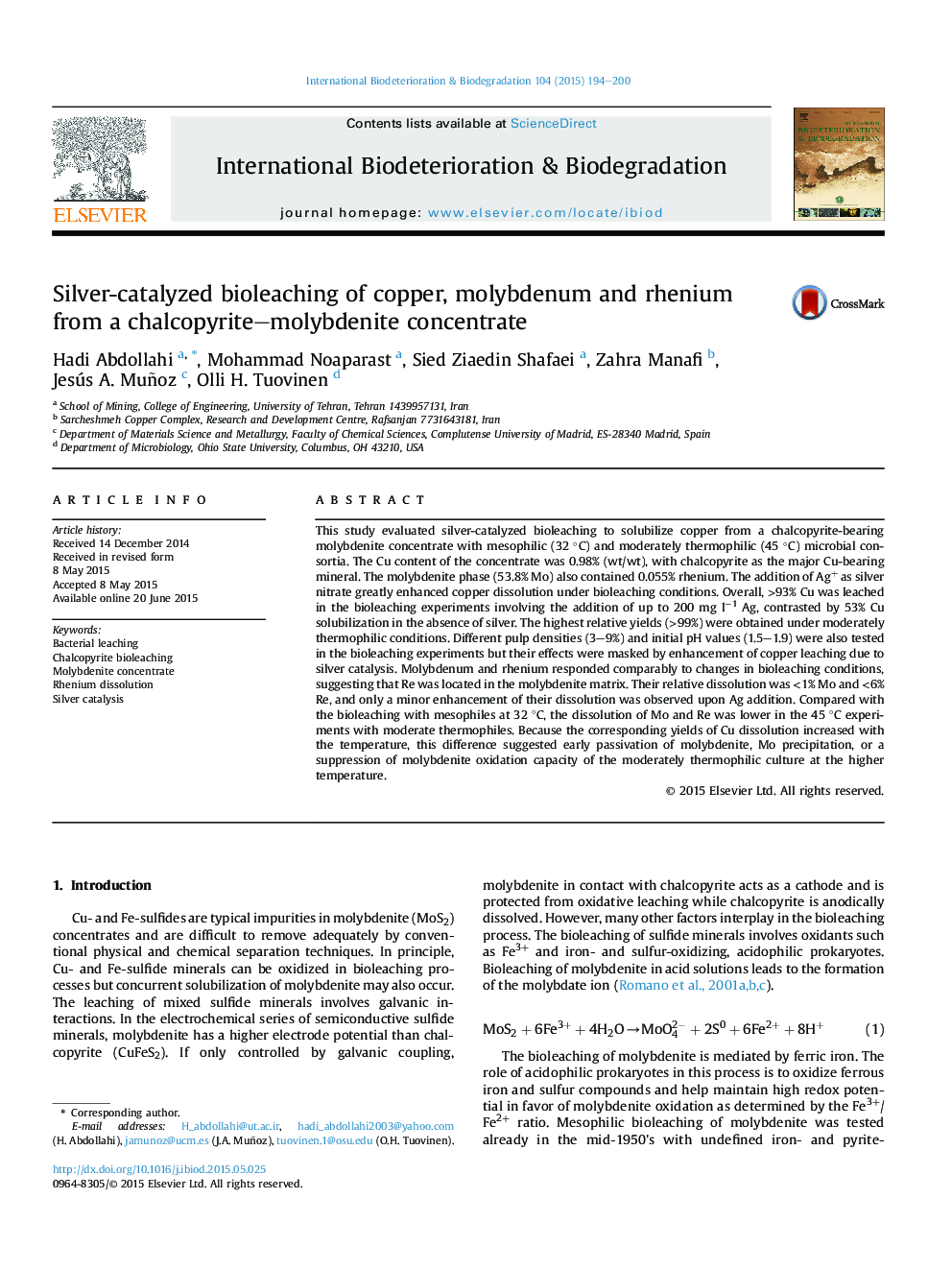| Article ID | Journal | Published Year | Pages | File Type |
|---|---|---|---|---|
| 4364479 | International Biodeterioration & Biodegradation | 2015 | 7 Pages |
•Copper bioleaching was tested with a CuFeS2-bearing molybdenite concentrate.•Silver increased the yields of bioleaching of copper with mesophilic bacteria (32 °C).•The relative dissolution was <1% for Mo and <6% for Re and not enhanced by Ag.•>99% Cu dissolution was obtained with silver and moderate thermophiles (45 °C).•The respective yields of Mo and Re were <0.35% and <2% at 45 °C.
This study evaluated silver-catalyzed bioleaching to solubilize copper from a chalcopyrite-bearing molybdenite concentrate with mesophilic (32 °C) and moderately thermophilic (45 °C) microbial consortia. The Cu content of the concentrate was 0.98% (wt/wt), with chalcopyrite as the major Cu-bearing mineral. The molybdenite phase (53.8% Mo) also contained 0.055% rhenium. The addition of Ag+ as silver nitrate greatly enhanced copper dissolution under bioleaching conditions. Overall, >93% Cu was leached in the bioleaching experiments involving the addition of up to 200 mg l−1 Ag, contrasted by 53% Cu solubilization in the absence of silver. The highest relative yields (>99%) were obtained under moderately thermophilic conditions. Different pulp densities (3–9%) and initial pH values (1.5–1.9) were also tested in the bioleaching experiments but their effects were masked by enhancement of copper leaching due to silver catalysis. Molybdenum and rhenium responded comparably to changes in bioleaching conditions, suggesting that Re was located in the molybdenite matrix. Their relative dissolution was <1% Mo and <6% Re, and only a minor enhancement of their dissolution was observed upon Ag addition. Compared with the bioleaching with mesophiles at 32 °C, the dissolution of Mo and Re was lower in the 45 °C experiments with moderate thermophiles. Because the corresponding yields of Cu dissolution increased with the temperature, this difference suggested early passivation of molybdenite, Mo precipitation, or a suppression of molybdenite oxidation capacity of the moderately thermophilic culture at the higher temperature.
